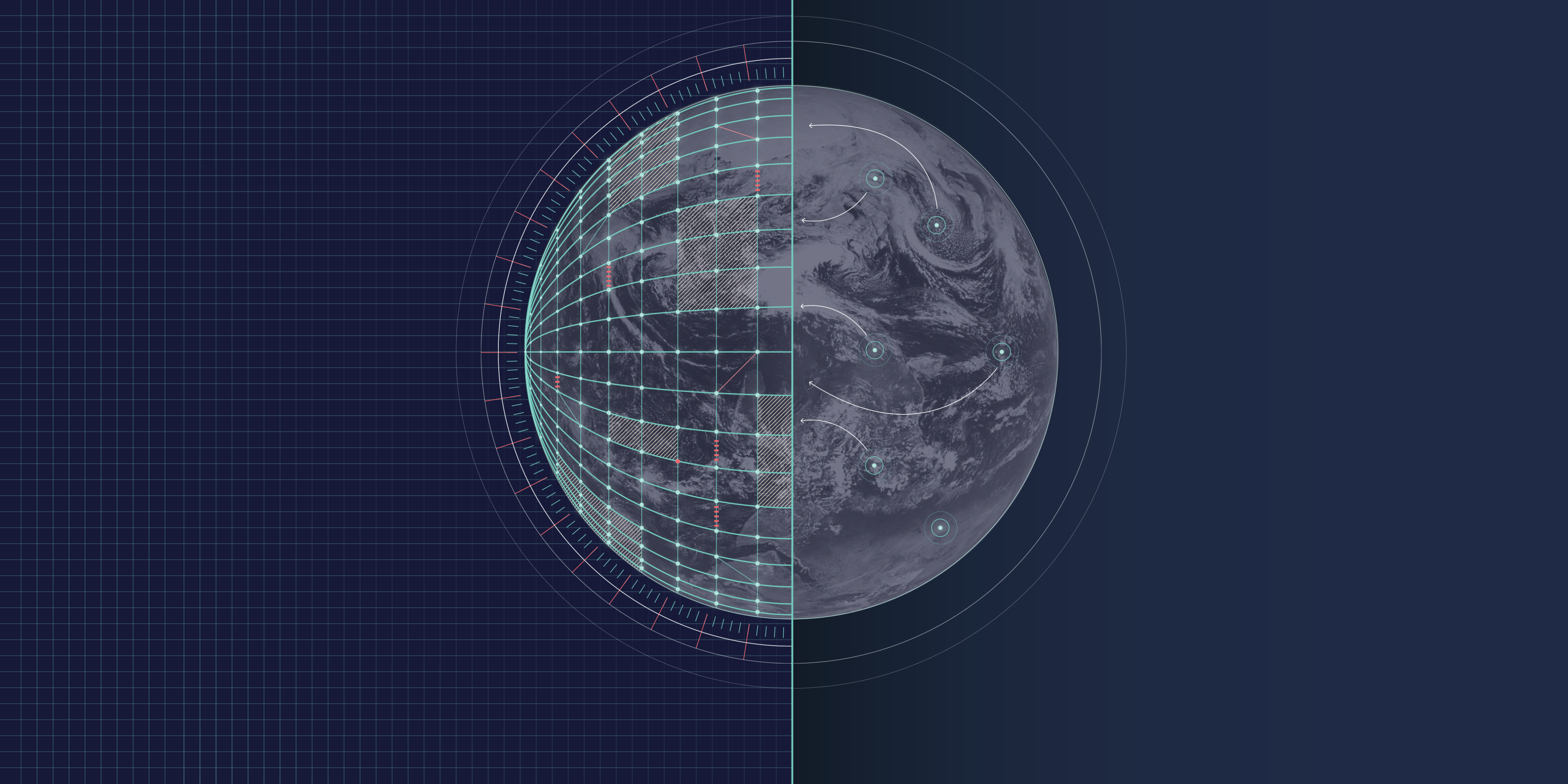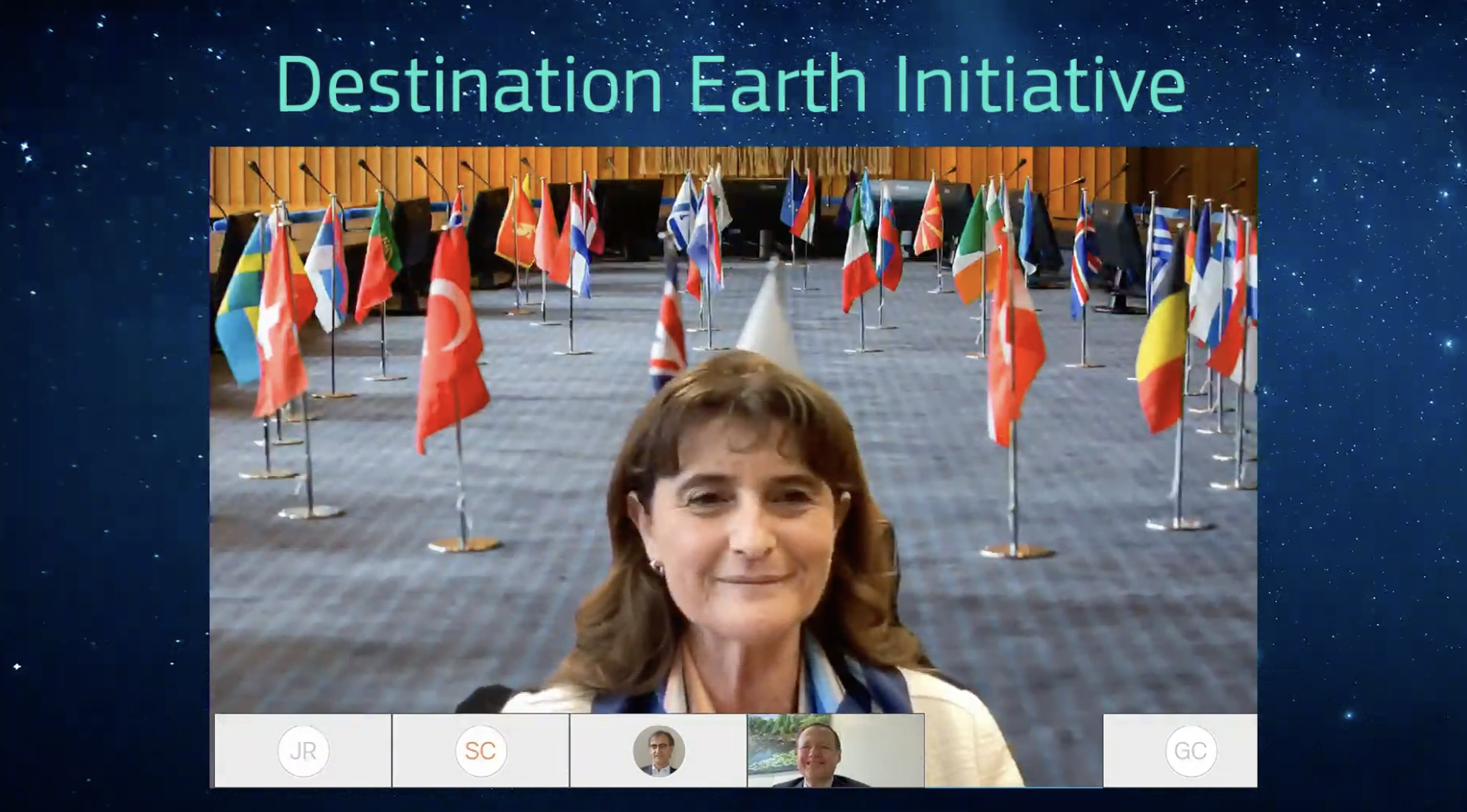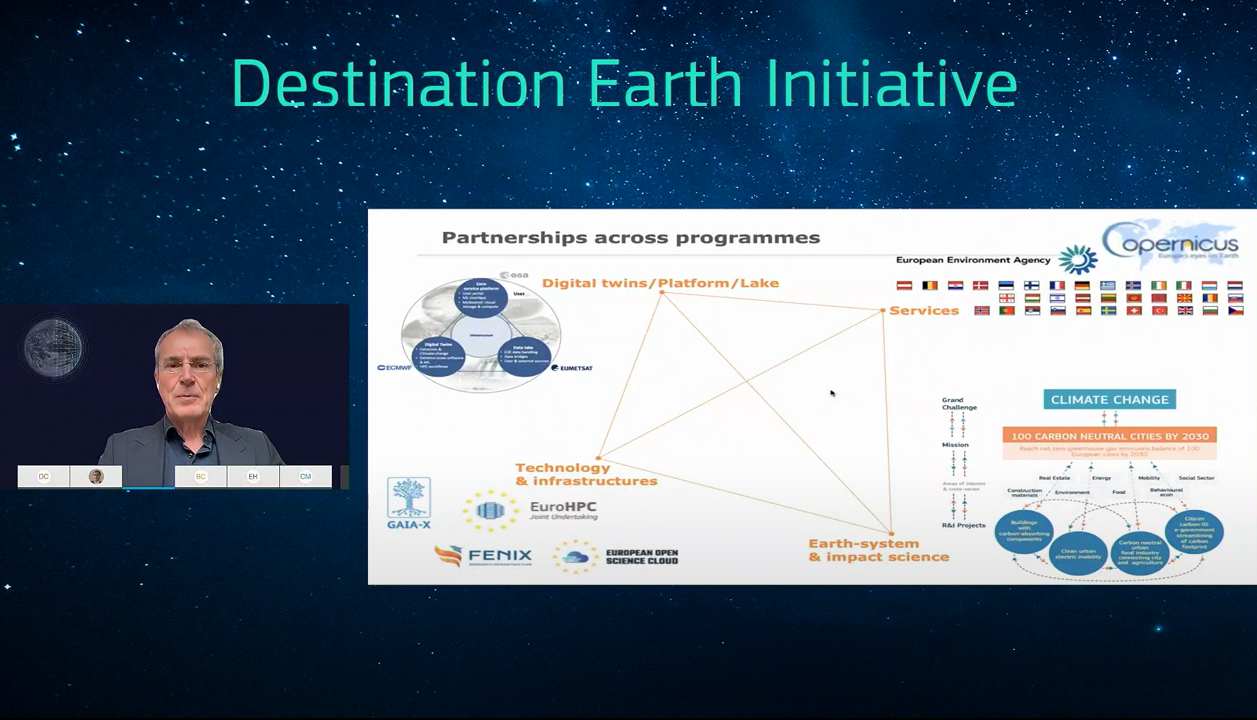News
The EU sets Destination Earth in motion

Back to ECMWF - Destination Earth main page
The journey to the next level of digital simulations of the Earth system has begun.
The European Commission hosted a virtual event on Wednesday 30 March to mark the beginning of Destination Earth (DestinE), the ground-breaking European project to build highly accurate and interactive digital twins of Earth.
In attendance were Director-General of DG CONNECT, Roberto Viola, Director-General of DG DEFIS, Timo Pesonen, and Director-General of DG RTD, Jean-Eric Paquet, whose departments will all play key roles in the ambitious initiative.
“Even more now, I think we appreciate the value of understanding, to look at what is ahead of us, to know what the emerging threats are.”
Representing the three European entities in charge of Destination Earth were Director-General of ECMWF, Florence Rabier, Director of Earth Observation Programmes at ESA, Simonetta Cheli, and Director-General of EUMETSAT, Phil Evans.


ECMWF Director of Destination Earth, Peter Bauer presenting during the first session 'Destination Earth – Setting the vision in motion'
ECMWF Director of Destination Earth, Peter Bauer presenting during the first session 'Destination Earth – Setting the vision in motion'
ECMWF Director-General, Florence Rabier, highlighted that no single state or entity could assume the technological and scientific challenges of developing interactive, higher resolution digital twins. “It will be another example of European partnership and we need that, with everything that it’s happening around us” adding that “this initiative will stand on the shoulders of giants, because so much has been achieved already by the partner institutions, the Copernicus services and the Member States”.
The event was also an opportunity for users to address some of the many questions around Destination Earth with the main stakeholders in charge of the project.
ECMWF Director of Destination Earth, Peter Bauer, described the synergies of the initiative with the technology sector, the Earth-system science community, and the high level European and national operating services.
Asked about concrete applications of the digital twins, he put the example of a renewable energy company needing to make sure their infrastructures “are fit for purpose in decades to come” and protected from extreme weather in the shorter term.
Destination Earth’s Project manager at ESA, Eric Montjoux, presented the key features of the core platform, explaining how the “front end” will allow users to retrieve the data that they need. However, he noted that there are many challenges to face, given that the digital twins will generate 10 times the amount of data compared to current services.
Lothar Wolf, Destination Earth Programme Manager at EUMETSAT, detailed the key requests of the complex data lake that will feed the digital twins. He also highlighted the extremely close cooperation between the three leading agencies that is needed to release the first visible results as early as 2024.
“It's only the beginning, but I think it promises to be a great help for a better Europe, a more prepared Europe and to reach a carbon neutral Europe by 2050"
Further information about the event

Initiative to create digital twin of our planet is launched article by ECWMF
Destination Earth - new digital twin of the Earth will help tackle climate change and protect nature press release by European Commission
Destination Earth launch event live recording
Event listing with agenda
